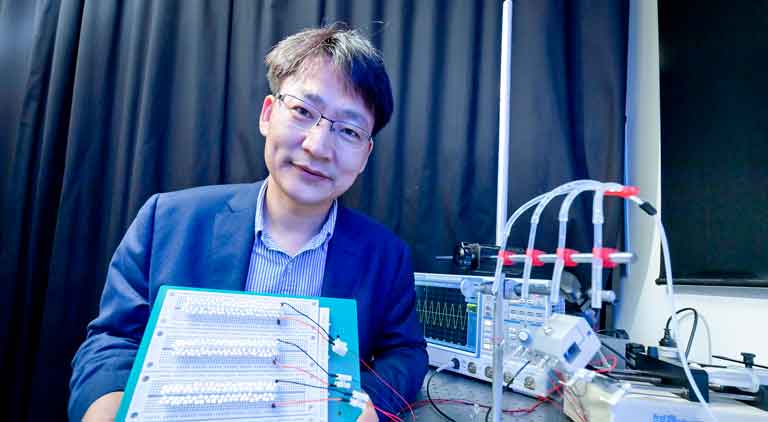New droplet-based electricity generator to change the face of power generation
By EPR Magazine Editorial March 4, 2020 11:24 am IST
By EPR Magazine Editorial March 4, 2020 11:24 am IST

A research team led by scientists from City University of Hong Kong (CityU) has recently developed a new form of droplet-based electricity generator (DEG) that features a field-effect transistor (FET)-like structure which allows for high energy-conversion efficiency. Its instantaneous power density is increased by thousands of times compared to its counterparts without FET-like structure. This new technology can help to advance scientific research into water energy generation and tackle the energy crisis.
The research was led by Professor Wang Zuankai from the Department of Mechanical Engineering of City University of Hong Kong; Professor Zeng Xiaocheng from the University of Nebraska-Lincoln, US; and Professor Wang Zhonglin, Founding Director and Chief Scientist at the Beijing Institute of Nanoenergy and Nanosystems of Chinese Academy of Sciences. Their findings were published in the latest issue of the highly prestigious scientific journal Nature under the title “A droplet-based electricity generator with high instantaneous power density”.
Professor Wang Zuankai from the Department of Mechanical Engineering of City University of Hong Kong talks to EPR Magazine about this groundbreaking achievement.
Advantages of the droplet-based electricity generator over conventional electricity generators
The large-scale hydropower generation based on the construction of dam has been quite efficient, but that is costly and also works at high frequency. Here we are focusing on harvesting water energy of low frequency. Several techniques that can harvest water energy of low-frequency motion have emerged. However, conventional droplet generators working still face the dilemma of low-charge density and small peak power density. For example, in the case of triboelectric generation, the electricity is generated through the friction of liquid with solid surface, which is essentially an interfacial effect. In our work, we develop a new electricity generator which is endowed with a bulk effect through a very simple but clever field-effect transistor-like design. In FET, we have three terminals, which are source, drain, and gate. The source provides electron and the drain draws electron, but the flow of electron from source to drain is controlled or gated by gate. In analogy to FET, the FET in our device serves as source, the AI electrode serves as drain, and the water droplet can be treated as a gate. When droplet connects PTFE (source) and Al (drain), we have output. As a result, our output performances are several orders of magnitude better than conventional droplet-based electricity generators.
Applications in a value-conscious country like India
From the materials and design point of view, it can be easily implemented and scaled up everywhere, because the design is based on simple flat surface and some electrodes. It can be used in multiple areas as long as there is some relative motion between water and solid substrates. It can be used to harvest raindrop, water wave, and water jet. Actually, it can be designed as wearable electronics, in which droplets are directed into capillary channels.
Availability in global markets
The technology barrier for commercialisation is not high. For simple application such as the harvesting of waste flowing water energy, it can be very quick, say, 2-3 years.
We use cookies to personalize your experience. By continuing to visit this website you agree to our Terms & Conditions, Privacy Policy and Cookie Policy.